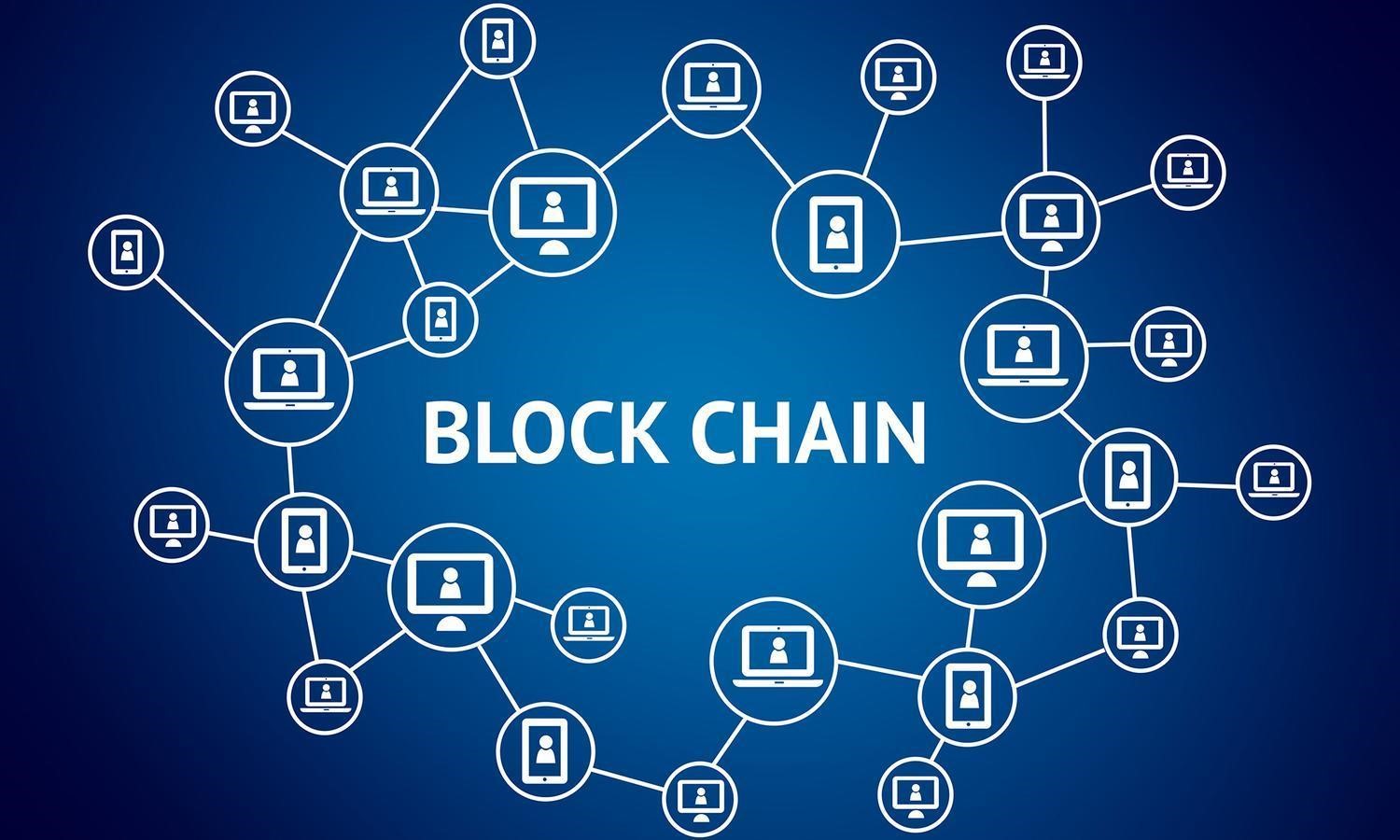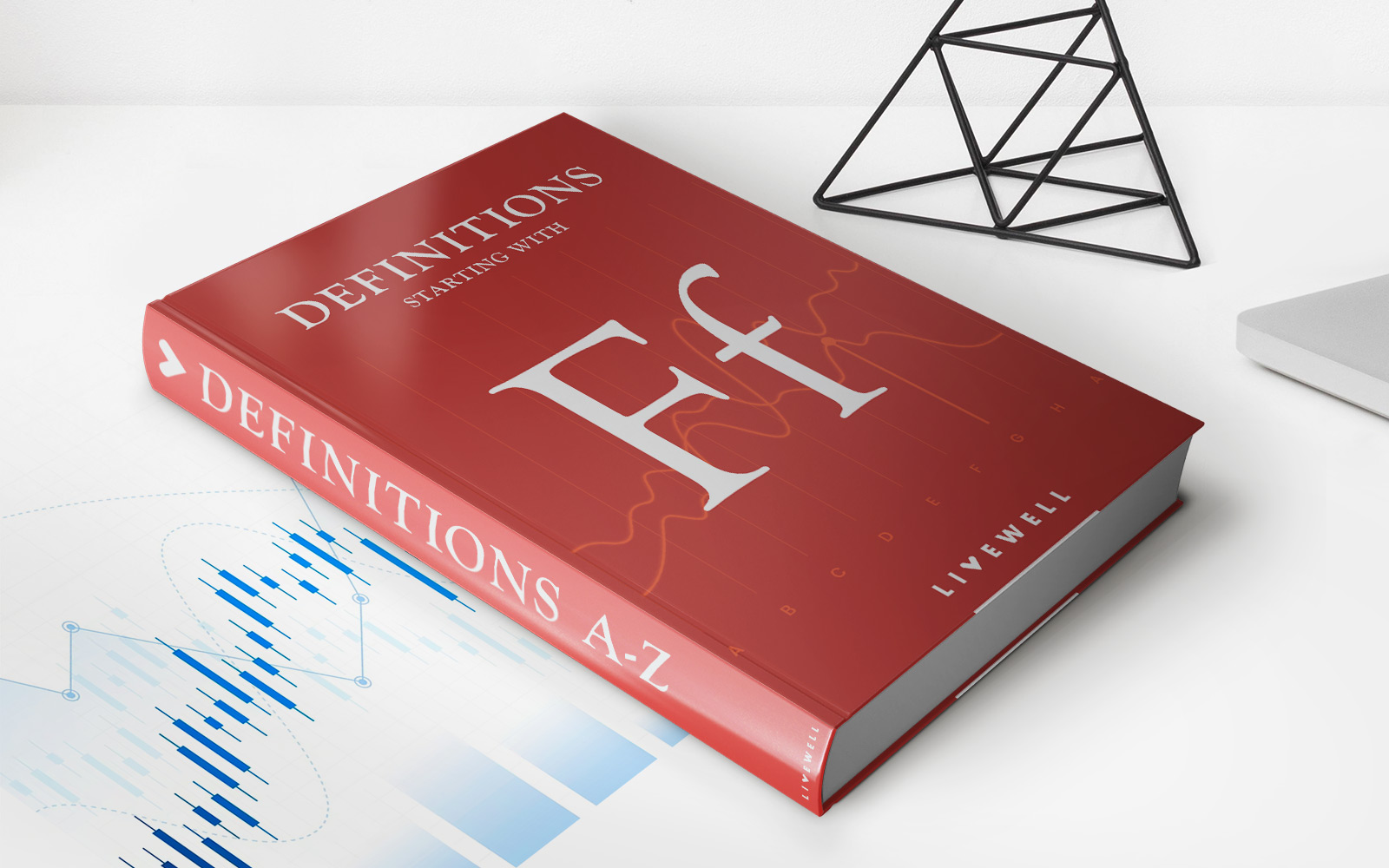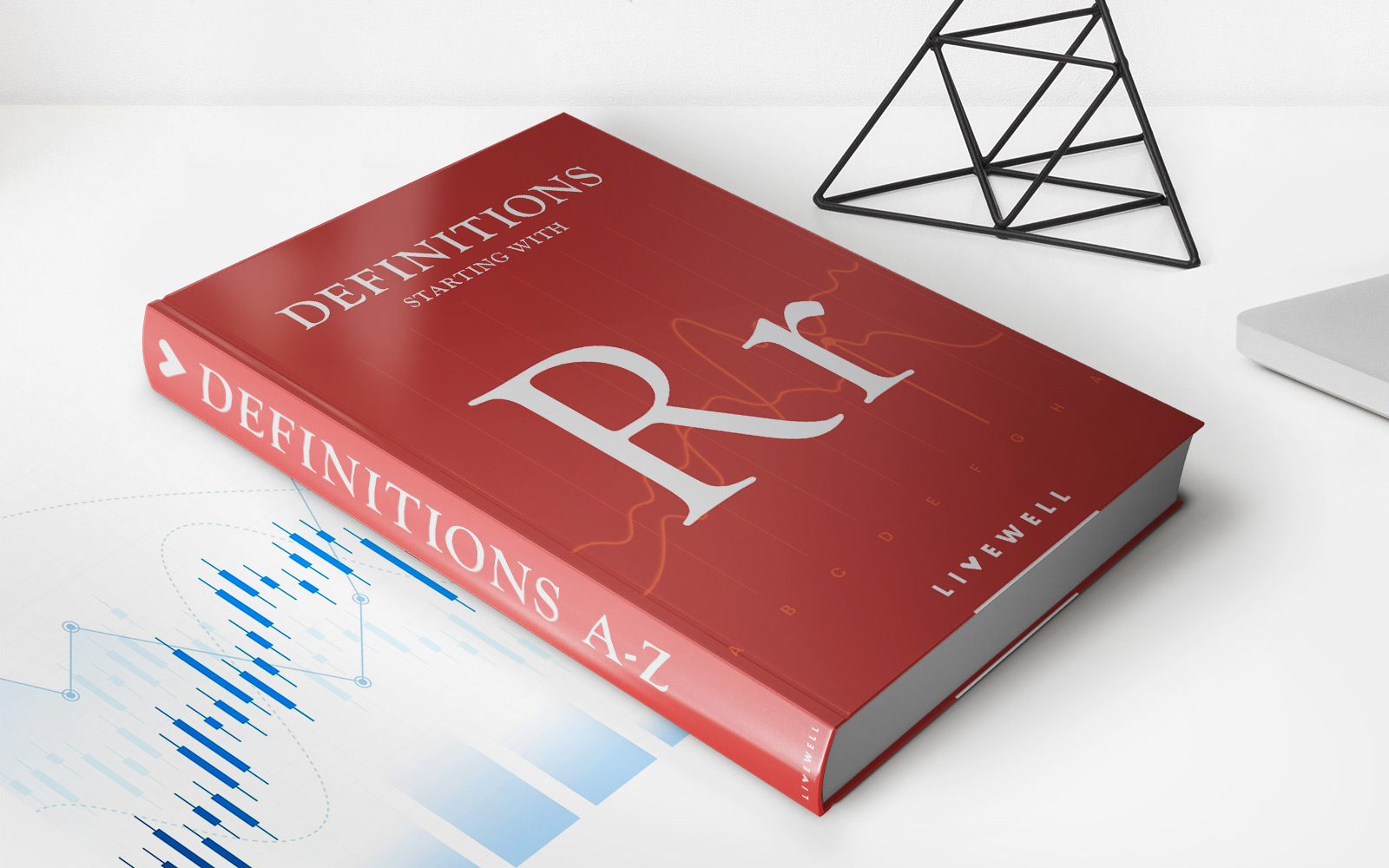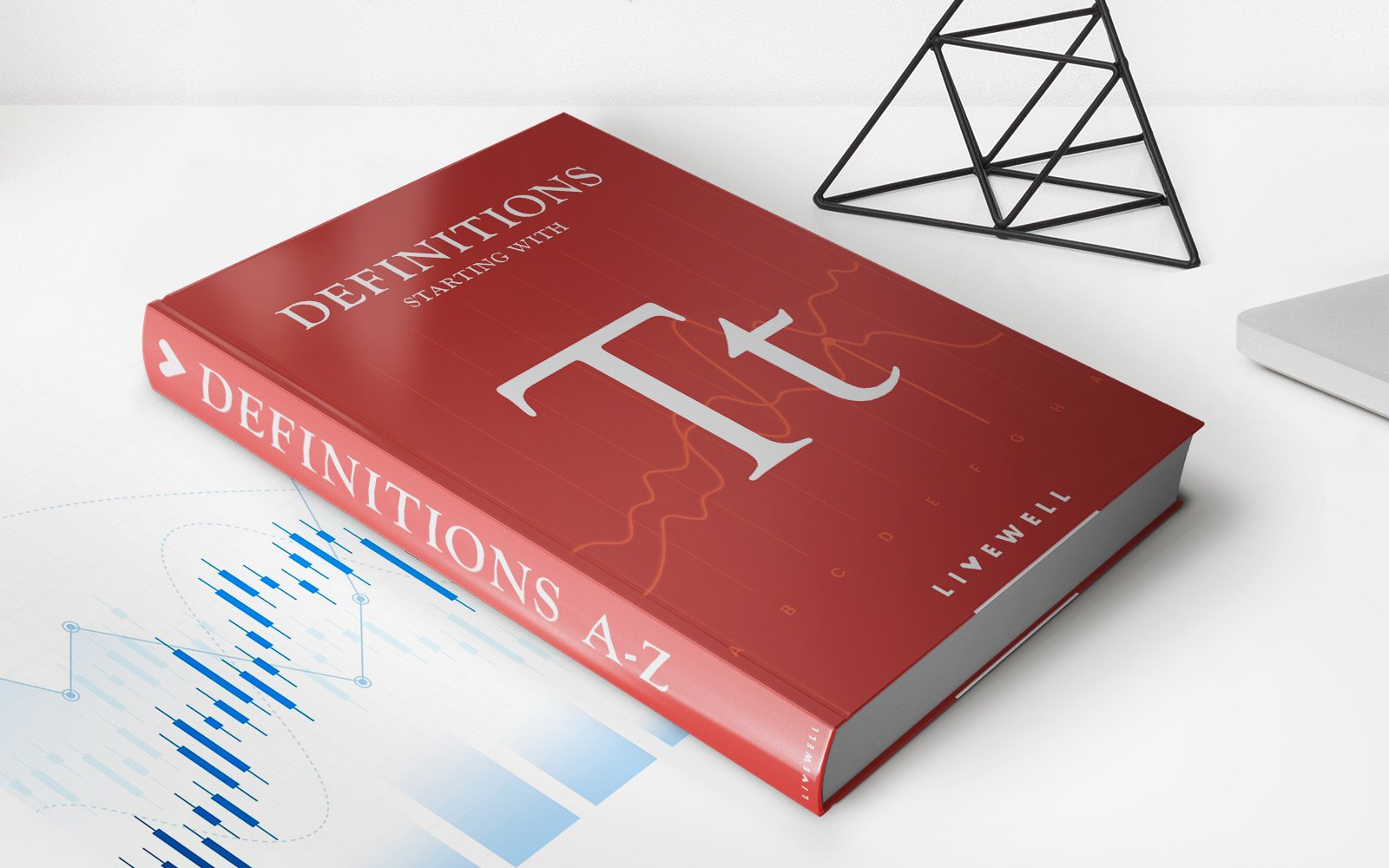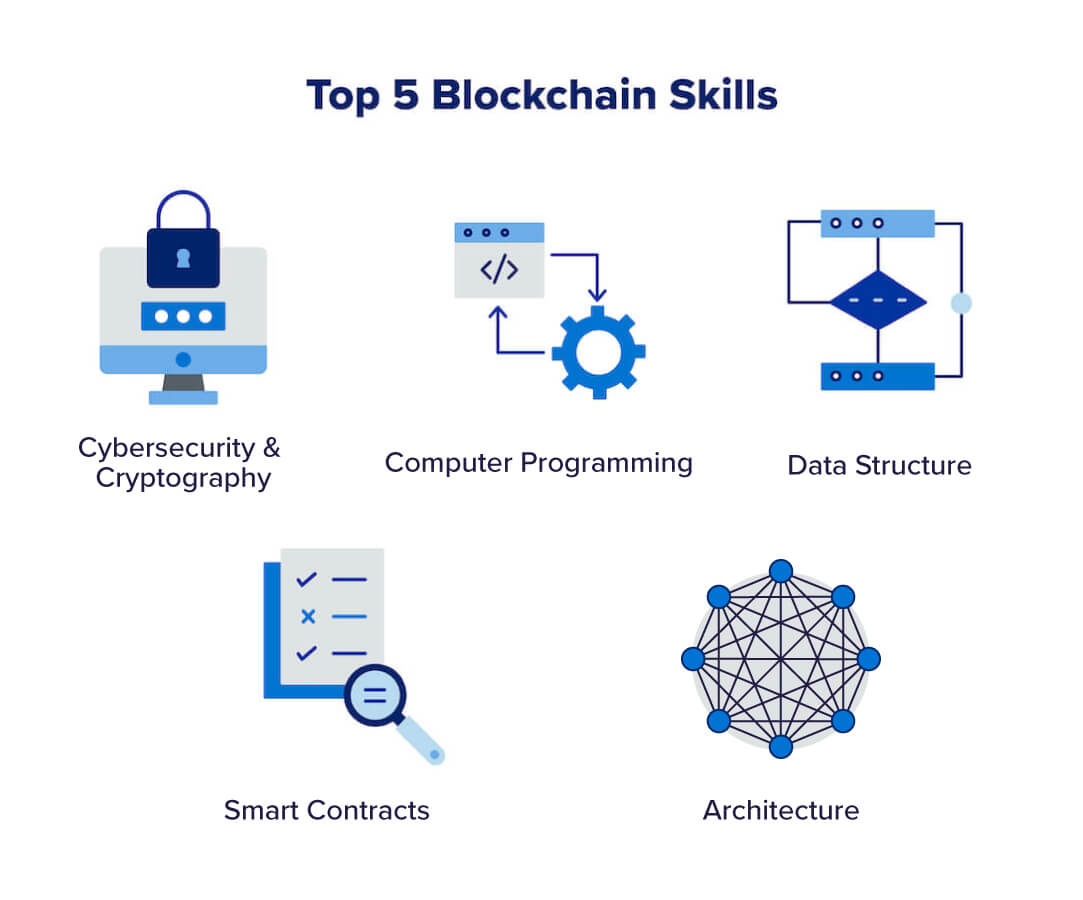

Finance
What Skills Do I Need To Learn Blockchain
Published: October 23, 2023
Discover the essential finance skills to learn blockchain technology and excel in the world of decentralized finance. Master the fundamentals of blockchain and enhance your financial expertise.
(Many of the links in this article redirect to a specific reviewed product. Your purchase of these products through affiliate links helps to generate commission for LiveWell, at no extra cost. Learn more)
Table of Contents
- Introduction
- Understanding Blockchain Technology
- Technical Skills
- Programming Languages
- Cryptography
- Data Structures and Algorithms
- Distributed Systems
- Networking
- Smart Contracts
- Non-Technical Skills
- Analytical Thinking
- Problem-Solving
- Communication Skills
- Teamwork and Collaboration
- Adaptability and Continuous Learning
- Conclusion
Introduction
As technology continues to evolve, blockchain has emerged as one of the most revolutionary innovations of recent times. A blockchain is a decentralized and immutable ledger that enables secure and transparent transactions without the need for intermediaries.
The ever-growing demand for blockchain technology has created a surge in job opportunities within the finance industry and beyond. To capitalize on this trend, it is essential to develop a comprehensive skill set that can tackle the challenges and complexities of blockchain development.
This article will delve into the key skills required to learn blockchain and excel in this field. It will cover both technical and non-technical skills that play a crucial role in understanding and implementing blockchain technology effectively.
Whether you’re an aspiring blockchain developer, a finance professional looking to leverage blockchain in your career, or an entrepreneur planning to integrate blockchain into your business, acquiring the right skills will be paramount to your success.
So, let’s dive into the world of blockchain and explore the essential skills you need to learn.
Understanding Blockchain Technology
Before diving into the skills required to learn blockchain, it is crucial to have a solid understanding of the technology itself. Blockchain is a distributed ledger that maintains a continuously growing list of records, called blocks, which are linked and secured using cryptographic algorithms.
At its core, blockchain is designed to be transparent, secure, and decentralized. It eliminates the need for a central authority, such as a bank or government, to validate and record transactions. Instead, it relies on a network of nodes that collectively maintain and update the blockchain.
Blockchain technology has gained significant popularity due to its various applications across industries, such as finance, supply chain management, healthcare, and more. It allows for the creation of immutable and transparent systems, reducing fraud, increasing efficiency, and enhancing trust between parties.
To fully comprehend blockchain technology, aspiring blockchain professionals must familiarize themselves with concepts such as consensus mechanisms, hashing, public and private keys, and digital signatures. They should also be versed in the different types of blockchains, including public, private, and consortium blockchains.
Additionally, understanding the fundamental principles of decentralized finance (DeFi) and smart contracts is essential. DeFi leverages blockchain technology to provide traditional financial services, such as lending, borrowing, and trading, without the need for intermediaries. Smart contracts are self-executing contracts that automatically execute predefined actions when specific conditions are met.
By grasping the underlying concepts and principles of blockchain technology, individuals can lay a strong foundation for acquiring the necessary skills to excel in this field.
Technical Skills
To become proficient in blockchain technology, a solid understanding of various technical skills is essential. These skills will empower individuals to develop, analyze, and deploy blockchain solutions effectively.
Here are some of the key technical skills required to learn blockchain:
1. Programming Languages: Proficiency in programming languages like Solidity (for Ethereum blockchain), C++, JavaScript, or Python is vital. This will enable developers to write smart contracts and build decentralized applications (DApps) on different blockchain platforms.
2. Cryptography: A good understanding of cryptographic algorithms and concepts, such as hashing, digital signatures, and encryption, is crucial. Cryptography ensures the security and integrity of data in a blockchain network.
3. Data Structures and Algorithms: Familiarity with data structures and algorithms is essential for designing and optimizing blockchain protocols. Knowledge of Merkle trees, hash functions, consensus algorithms (e.g., Proof of Work, Proof of Stake), and distributed ledger technologies is beneficial.
4. Distributed Systems: Understanding the architecture and principles of distributed systems is necessary to comprehend the decentralized nature of blockchains. Concepts like peer-to-peer networking, consensus protocols, fault tolerance, and scalability are key to building robust blockchain networks.
5. Networking: Knowledge of networking protocols, such as TCP/IP, HTTP, and DNS, is crucial. It helps in understanding the communication between blockchain nodes and how transactions are propagated across the network.
6. Smart Contracts: Proficiency in writing and deploying smart contracts is essential for blockchain developers. Smart contracts are self-executing contracts with predefined rules and conditions that automatically execute when triggered.
These technical skills provide a strong foundation for individuals looking to excel in blockchain development. However, it’s important to note that the rapidly evolving nature of blockchain technology means that continuous learning and staying updated with the latest developments is essential for success in this field.
Programming Languages
Programming languages play a crucial role in blockchain development as they allow developers to write code for smart contracts and decentralized applications (DApps). Proficiency in programming languages specific to blockchain platforms is essential for creating and implementing blockchain solutions. Here are some of the key programming languages used in blockchain development:
1. Solidity: Solidity is the most popular programming language for building smart contracts on the Ethereum blockchain. It is a statically-typed language specifically designed for Ethereum and provides a high-level syntax for writing secure and efficient smart contracts.
2. C++: C++ is a widely used programming language in the blockchain space. It offers excellent performance and is known for its flexibility and robustness. Many blockchain platforms, including Bitcoin and EOS, are built using C++.
3. JavaScript: JavaScript has gained significant popularity in blockchain development, especially with the rise of blockchain platforms like Ethereum. It is widely used for creating decentralized applications and interacting with smart contracts through frameworks like Web3.js.
4. Python: Python is a versatile programming language and is often used for blockchain development due to its simplicity and ease of use. It has several libraries and frameworks, such as Pyethereum and Populus, that facilitate blockchain development.
5. Rust: Rust is a systems programming language that offers high performance, memory safety, and low-level control. It is becoming increasingly popular in blockchain development, particularly for building blockchain infrastructure and decentralized protocols.
While proficiency in these programming languages is essential, it is worth noting that blockchain technology is constantly evolving. As a result, developers should also be open to learning and adapting to emerging programming languages that cater specifically to blockchain development.
It is important to choose the right programming language based on the specific blockchain platform and project requirements. Additionally, developers should also have knowledge of common development tools, frameworks, and libraries associated with the chosen language to streamline the development process and ensure code quality and security.
By mastering the programming languages relevant to blockchain development, individuals can unlock endless possibilities and contribute to the growth and adoption of this transformative technology.
Cryptography
Cryptography is a fundamental aspect of blockchain technology, providing the security and integrity needed to ensure trust and confidentiality within a decentralized network. Understanding cryptography concepts is essential for individuals aiming to learn and excel in blockchain development. Here are some key aspects of cryptography within blockchain:
1. Hash Functions: Hash functions are a core component of blockchain cryptography. They take an input (data or a message) and generate a fixed-length string of characters, called the hash. Hash functions are designed to be one-way, meaning it is computationally infeasible to derive the original input from the hash. They play a crucial role in ensuring the integrity of data within a blockchain.
2. Digital Signatures: Digital signatures are cryptographic mechanisms that provide authentication and non-repudiation in blockchain transactions. They consist of a private key owned by the signer and a corresponding public key available to anyone. The private key is used to sign a transaction, and the public key is used to verify the authenticity of the signature.
3. Encryption: Encryption is the process of converting plaintext into ciphertext to protect sensitive information. In the context of blockchain, encryption is used to secure data transmission and storage, ensuring that only authorized parties can access the encrypted data.
4. Public-Key Cryptography: Public-key cryptography, also known as asymmetric cryptography, utilizes a pair of keys – a public key and a private key. The public key is distributed widely and used for encryption, while the private key is kept secret and used for decryption. Public-key cryptography is crucial for secure communication and digital identity verification in blockchain networks.
5. Key Management: Effective key management is essential in blockchain to ensure the security of cryptographic operations. It involves key generation, storage, distribution, and revocation. Proper key management practices are critical to prevent unauthorized access and protect the confidentiality and integrity of blockchain data.
Understanding the basics of cryptography and its application within blockchain technology is vital for individuals interested in blockchain development. It enables them to design secure systems, implement cryptographic protocols, and ensure data privacy and integrity in blockchain networks.
Moreover, staying updated with advancements in cryptography is crucial, as new algorithms and techniques may emerge to enhance the security and privacy of blockchain systems. As blockchain technology continues to evolve, a solid understanding of cryptography will remain an indispensable skill for blockchain professionals.
Data Structures and Algorithms
Data structures and algorithms form the backbone of blockchain technology, enabling efficient storage, retrieval, and processing of data within a decentralized network. A solid understanding of data structures and algorithms is crucial for individuals aspiring to learn and excel in blockchain development. Here are some key aspects to consider:
1. Merkle Trees: Merkle trees, also known as hash trees, are hierarchical data structures used to efficiently verify the integrity and consistency of data within a blockchain. They allow for secure and quick verification of transactions and enable efficient synchronization of blockchain nodes.
2. Hash Functions: Hash functions are the building blocks of data integrity in blockchain. Understanding how hash functions work, their properties, and their various applications within a blockchain network is essential. Hash functions serve as the basis for creating unique cryptographic fingerprints of data blocks and transactions.
3. Consensus Algorithms: Consensus algorithms determine how nodes in a blockchain network agree on the state of the ledger and validate transactions. Familiarity with consensus algorithms like Proof of Work (PoW), Proof of Stake (PoS), and Practical Byzantine Fault Tolerance (PBFT) is essential for understanding the security and scalability of different blockchain platforms.
4. Distributed Ledger Technology: Understanding the underlying data structures and algorithms used in distributed ledgers is crucial. Concepts like blockchains, linked lists, graphs, and distributed hash tables help individuals comprehend how data is organized and shared across multiple nodes in a secure and decentralized manner.
5. Optimization: Efficient data structures and algorithm design are important for optimizing the performance and scalability of blockchain networks. Knowledge of algorithms for efficient storage, retrieval, and consensus protocols can help developers create scalable and robust blockchain solutions.
6. Data Privacy: Familiarity with privacy-preserving data structures and algorithms is crucial in maintaining confidentiality within a blockchain network. Techniques such as zero-knowledge proofs and confidential transactions ensure that sensitive information remains private while still enabling secure and transparent transactions.
A strong grasp of data structures and algorithms allows individuals to navigate the complexities of blockchain development. It empowers them to build efficient and secure blockchain solutions and solve challenges related to scalability, data integrity, and privacy.
As blockchain technology evolves, it is important to stay updated with the latest advancements in data structures and algorithms. This continuous learning ensures that blockchain professionals can adapt to new challenges and leverage innovative techniques to further enhance the capabilities of blockchain networks.
Distributed Systems
Understanding the principles of distributed systems is crucial for individuals looking to learn and excel in blockchain development. Blockchain technology operates on a decentralized model, where multiple nodes work together to maintain a shared ledger, ensuring transparency, security, and immutability. Here are some key aspects of distributed systems relevant to blockchain:
1. Peer-to-Peer Networking: Blockchain networks are built on a peer-to-peer (P2P) architecture, where each participating node maintains a copy of the ledger. Understanding P2P networking protocols and how nodes communicate and share information is essential in building scalable and resilient blockchain networks.
2. Consensus Protocols: Consensus protocols determine how nodes in a distributed system reach an agreement on the state of the ledger. Consensus algorithms such as Proof of Work (PoW), Proof of Stake (PoS), and Practical Byzantine Fault Tolerance (PBFT) ensure that all participants in the network agree on the validity of transactions and maintain the integrity of the blockchain.
3. Fault Tolerance: Distributed systems are prone to various types of failures, including node failures, network partitions, and malicious attacks. Understanding fault-tolerant techniques like redundancy, replication, and consensus mechanisms helps ensure the reliability and resilience of blockchain networks.
4. Scalability: As blockchain networks grow, scalability becomes a critical factor. Distributed systems employ various methods for achieving scalability, such as sharding, sidechains, and off-chain solutions. Understanding these techniques helps in designing and implementing scalable blockchain solutions.
5. Security: Distributed systems face unique security challenges due to their decentralized nature. Knowledge of cryptographic primitives, encryption, and authentication mechanisms is essential for ensuring the confidentiality and integrity of data within a blockchain network.
6. Interoperability: Interoperability refers to the ability of different blockchain networks to communicate and exchange data with each other. Understanding how distributed systems handle interoperability, including cross-chain transactions, atomic swaps, and interoperability protocols, is important for building interconnected blockchain ecosystems.
A strong understanding of distributed systems allows individuals to design and develop robust blockchain solutions that can handle the challenges of scalability, fault tolerance, and security. Additionally, keeping up with the latest advancements in distributed systems research ensures that blockchain professionals can leverage cutting-edge techniques to improve the efficiency and performance of blockchain networks.
As blockchain technology continues to evolve, mastering the principles and concepts of distributed systems will remain integral to building successful and sustainable blockchain applications.
Networking
Networking is a crucial aspect of blockchain technology as it enables communication and data sharing between nodes in a decentralized network. Understanding networking protocols and concepts is essential for individuals looking to learn and excel in blockchain development. Here are some key aspects of networking in the context of blockchain:
1. Peer-to-Peer (P2P) Networking: Blockchain networks are typically built on a peer-to-peer architecture, where nodes connect directly with each other without the need for intermediaries. Understanding P2P networking protocols, such as TCP/IP, UDP, and WebSocket, is vital for enabling efficient and secure communication between blockchain nodes.
2. Node Discovery: Nodes in a blockchain network need a mechanism to discover and connect with other nodes. Different methods such as DNS-based discovery, bootstrapping, and Distributed Hash Table (DHT) enable nodes to find and establish connections with other nodes in the network.
3. Transaction Propagation: Efficient and timely propagation of transactions across the network is crucial in blockchain. Understanding protocols like the Gossip protocol, where nodes disseminate transactions to their peers, helps ensure that transactions reach consensus and get included in the blockchain.
4. Message Broadcasting: Broadcasting messages within a blockchain network is essential for achieving consensus and maintaining network integrity. Knowledge of protocols like flooding, epidemic, or gossip-based broadcasting helps in implementing reliable and robust message dissemination mechanisms.
5. Network Security: Network security is paramount in blockchain to prevent unauthorized access, ensure data integrity, and protect against attacks. Familiarity with cryptographic protocols, firewalls, VPNs, and other security mechanisms helps in safeguarding the network against threats and vulnerabilities.
6. Network Scalability: As blockchain networks grow in size and transactions increase, scalability becomes a critical consideration. Understanding techniques like parallelization, sharding, and off-chain solutions helps in designing scalable blockchain architectures that can handle the increasing demands of the network.
A solid understanding of networking concepts and protocols allows individuals to effectively design, implement, and maintain robust and secure blockchain networks. It enables efficient communication, transaction propagation, and consensus mechanisms, creating a reliable and resilient decentralized system.
Staying updated with the latest advancements in networking technologies is crucial, as blockchain networks continue to evolve and new techniques are developed to improve scalability, security, and interoperability.
Mastering networking skills in the context of blockchain technology empowers individuals to contribute to the growth and adoption of this innovative technology, enabling the development of more efficient and secure blockchain applications.
Smart Contracts
Smart contracts are a fundamental aspect of blockchain technology, enabling self-executing and tamper-proof agreements between parties without the need for intermediaries. Understanding smart contracts is essential for individuals looking to learn and excel in blockchain development. Here are some key aspects of smart contracts:
1. Definition and Function: Smart contracts are software programs that automatically execute predefined actions or conditions when specific criteria are met. They are stored on the blockchain and executed in a decentralized manner. Smart contracts enable trust and enforce the terms of an agreement without relying on a central authority.
2. Smart Contract Languages: Different blockchain platforms support specific programming languages for writing smart contracts. For example, Solidity is commonly used for Ethereum smart contracts, while languages like Vyper and Clarity offer alternatives. Familiarity with the syntax and features of these languages is necessary for creating and deploying smart contracts on the respective platforms.
3. Contract Design: Designing efficient and secure smart contracts involves determining the contract’s purpose, defining the contract’s state variables, and implementing the contract’s functions and logic. It also includes considering potential vulnerabilities, such as reentrancy attacks or integer overflow/underflow, and implementing appropriate security measures.
4. Interaction with Blockchain: Smart contracts interact with the blockchain by storing data, processing transactions, and modifying the contract’s state. Understanding the mechanisms for accessing and manipulating blockchain data within smart contracts is crucial for creating complex and functional decentralized applications.
5. Testing and Deployment: Thoroughly testing smart contracts is vital to ensure functionality, security, and reliability. Techniques like unit testing, integration testing, and utilizing test networks (such as Ethereum’s Rinkeby or Ropsten) are essential to identify and fix bugs before deploying the smart contracts on the mainnet.
6. Integration with DApps: Smart contracts often serve as the backend logic for decentralized applications (DApps). Understanding how to integrate smart contracts with front-end interfaces, user wallets, and other components of DApps is essential for creating a seamless user experience.
Smart contracts streamline and automate a wide range of processes, from financial transactions and supply chain management to governance mechanisms and digital identity systems. Mastery of smart contract development opens up opportunities to create innovative blockchain-based solutions that eliminate intermediaries, increase efficiency, and enhance trust in various industries.
As blockchain technology evolves, staying updated with the latest advancements in smart contract frameworks, tools, and security best practices is crucial. This continuous learning ensures that blockchain professionals can leverage the full potential of smart contracts to build reliable and secure decentralized applications.
Non-Technical Skills
While technical skills are essential for success in blockchain development, non-technical skills also play a crucial role in excelling in this field. These skills are often transferrable and can significantly enhance an individual’s effectiveness in understanding and implementing blockchain technology. Here are some key non-technical skills that are valuable in the realm of blockchain:
1. Analytical Thinking: Blockchain technology involves complex systems and intricate problem-solving. Analytical thinking helps in breaking down complex scenarios, identifying patterns, and making informed decisions when designing blockchain solutions.
2. Problem-Solving: Blockchain development often requires individuals to solve unique challenges. Having strong problem-solving skills enables blockchain professionals to identify and overcome obstacles while designing and implementing effective blockchain solutions.
3. Communication Skills: Clear and effective communication is crucial when working with interdisciplinary teams or explaining complex blockchain concepts to non-technical stakeholders. Strong communication skills help bridge the gap between technical and non-technical individuals, fostering collaboration and understanding.
4. Teamwork and Collaboration: Blockchain development is a collaborative endeavor. Being able to work effectively as part of a team, sharing ideas, and collaborating with different stakeholders is vital for successful blockchain projects.
5. Adaptability and Continuous Learning: Blockchain technology is constantly evolving, and staying updated with the latest advancements is essential. Being adaptable and having a thirst for continuous learning enables individuals to stay abreast of new developments and adapt their knowledge and skills accordingly.
6. Business Acumen: Understanding the broader business context in which blockchain technology operates is valuable. Having a grasp of financial markets, regulatory environments, and industry-specific knowledge can provide insights into how blockchain can be applied effectively in different sectors.
7. Strategic Thinking: Blockchain solutions often require long-term planning and strategic thinking. Being able to align blockchain initiatives with business goals and identify areas where blockchain can add value is crucial for successful implementation.
8. Ethical Awareness: Blockchain technology raises ethical considerations concerning privacy, data security, and transparency. Having a strong ethical compass is important when designing blockchain solutions that prioritize user privacy and societal benefits.
Combining technical expertise with these non-technical skills allows individuals to excel in blockchain development. It enables them to approach blockchain projects holistically, by considering technical aspects, practical implications, and ethical considerations.
Developing these non-technical skills alongside technical proficiency will enhance the overall effectiveness of blockchain professionals, enabling them to navigate the complexities of this transformative technology successfully.
Analytical Thinking
Analytical thinking is a crucial non-technical skill that plays a significant role in excelling in blockchain development. It involves the ability to systematically break down complex problems, analyze data, identify patterns, and make informed decisions based on logical reasoning. In the realm of blockchain, analytical thinking is essential for understanding the intricacies of blockchain technology and designing effective solutions. Here are key aspects of analytical thinking in blockchain:
1. Problem Decomposition: Analytical thinking enables individuals to break down complex blockchain challenges into smaller, more manageable components. By deconstructing problems, blockchain professionals can better understand the underlying issues and devise appropriate solutions.
2. Data Analysis: Blockchain generates vast amounts of data. Analytical thinking allows professionals to analyze this data, spot trends, identify anomalies, and extract meaningful insights. This data analysis can help inform decision-making and optimize blockchain solutions.
3. Pattern Recognition: Recognizing patterns is crucial in understanding the behavior of blockchain networks, identifying potential vulnerabilities, or uncovering opportunities for optimization. Analytical thinking helps individuals to spot recurring patterns within transaction data, network activity, or security incidents.
4. Risk Assessment: Analytical thinking aids in assessing and mitigating risks within blockchain projects. Understanding potential risks, analyzing their impact, and developing relevant risk mitigation strategies is crucial for ensuring the security and success of blockchain implementations.
5. Evaluation of Alternatives: Blockchain professionals often need to evaluate different alternatives or approaches when designing solutions. Analytical thinking allows for a systematic comparison of different options based on their feasibility, scalability, security, and potential impact.
6. Decision-Making: Analytical thinking provides a structured approach to decision-making in blockchain projects. It involves gathering relevant information, evaluating different factors, and making informed choices based on logical reasoning and data analysis.
7. Continuous Improvement: Analytical thinking drives the pursuit of continuous improvement in blockchain development. By critically analyzing existing blockchain systems, processes, and architectures, professionals can identify areas for enhancement and suggest data-driven optimizations.
Analytical thinking enables blockchain professionals to approach complex problems with a logical and methodical mindset. It allows for the thorough evaluation of information, facilitates data-driven decision-making, and helps identify innovative solutions to challenges within the domain of blockchain technology.
The ability to think analytically is highly valuable in the ever-evolving landscape of blockchain, where new challenges and opportunities constantly arise. By honing this skill, blockchain professionals can navigate the complexities of the technology, seize opportunities for innovation, and contribute to the growth and advancement of the blockchain ecosystem.
Problem-Solving
Problem-solving is a critical skill for individuals seeking to excel in blockchain development. This skill involves the ability to identify, analyze, and overcome challenges that arise within the blockchain ecosystem. Problem-solving skills enable blockchain professionals to design innovative solutions, optimize processes, and navigate the rapidly changing landscape of blockchain technology. Here are key aspects of problem-solving in the context of blockchain:
1. Identification of Challenges: Effective problem-solving begins with recognizing the specific challenges or roadblocks within the blockchain domain. This includes issues such as scalability, consensus mechanisms, security vulnerabilities, or regulatory compliance. Identifying these challenges enables individuals to focus their problem-solving efforts on relevant areas.
2. Analytical Mindset: Adopting an analytical mindset allows blockchain professionals to approach problems systematically. They can break down complex issues into smaller components, gather relevant data, and analyze the root causes or contributing factors. This systematic approach helps in understanding the problem thoroughly and uncovering potential solutions.
3. Alternative Solutions: Problem-solving involves generating multiple potential solutions to address a challenge. Blockchain professionals should think creatively, exploring various approaches and considering their feasibility, scalability, and potential impact. By generating diverse alternatives, they can choose the most effective path forward.
4. Evaluation and Decision-Making: Evaluating alternative solutions requires the assessment of their strengths, weaknesses, and risks. This evaluation process involves considering factors such as technical feasibility, cost-effectiveness, and alignment with business objectives. Making informed decisions based on this evaluation is essential to implement optimal solutions.
5. Adaptability and Flexibility: Problem-solving in blockchain requires adaptability and flexibility. The technology is continually evolving, and new challenges often emerge. Blockchain professionals need to embrace change, stay updated with industry developments, and adjust their problem-solving approaches to meet evolving needs.
6. Collaboration: Effective problem-solving often benefits from collaboration with a diverse team of blockchain professionals. Collaboration fosters the exchange of ideas, insights, and perspectives. It enables pooling of expertise and promotes innovative problem-solving solutions through collective intelligence.
7. Continuous Improvement: Problem-solving is an iterative process. Blockchain professionals should continuously assess the effectiveness of their solutions and seek opportunities for improvement. Learning from past experiences, analyzing feedback, and embracing a mindset of continuous improvement contribute to enhancing problem-solving skills.
Developing strong problem-solving skills empowers blockchain professionals to tackle complex challenges inherent in this transformative technology. It enables them to navigate decentralized systems, optimize performance, address scalability issues, facilitate secure transactions, and design innovative blockchain solutions.
Problem-solving skills are valuable assets in a field where innovation is the driver of progress. By cultivating this skill, blockchain professionals can overcome obstacles, drive efficiency, and contribute to the advancement and adoption of blockchain technology.
Communication Skills
Effective communication skills are essential for individuals seeking to excel in blockchain development. The blockchain ecosystem involves collaboration with diverse stakeholders, including technical team members, business leaders, clients, and users. Strong communication skills enable blockchain professionals to articulate complex concepts, facilitate understanding, and foster successful collaborations. Here are key aspects of communication skills in the context of blockchain:
1. Clear Explanation of Concepts: Communicating blockchain concepts in a clear and concise manner is vital. The ability to break down complex technical jargon into understandable terms allows non-technical stakeholders to grasp the value and potential of blockchain solutions. Clear communication helps bridge the gap between technical and non-technical individuals.
2. Active Listening: Active listening is crucial for effective communication. It involves paying attention, understanding viewpoints, and seeking clarification when necessary. Blockchain professionals who actively listen can better understand the needs, concerns, and ideas of stakeholders, facilitating productive discussions and collaborations.
3. Engaging Presentations: Delivering engaging and informative presentations is an essential communication skill. Blockchain professionals need to convey technical concepts, project updates, and business implications to various audiences. Engaging presentations captivate stakeholders’ attention, effectively convey information, and inspire confidence in blockchain solutions.
4. Empathy and Adaptation: Empathy allows blockchain professionals to understand the perspectives and concerns of diverse stakeholders. Effective communication involves adapting to different communication styles, tailoring messages to specific audiences, and addressing concerns with empathy. This ability to connect and empathize fosters collaborative relationships.
5. Documentation and Technical Writing: Clear and concise documentation is crucial for sharing technical information and ensuring a common understanding among team members and stakeholders. Strong technical writing skills enable blockchain professionals to create comprehensive and understandable technical documentation, such as whitepapers, project reports, or user guides.
6. Conflict Resolution: Effective communication skills aid in resolving conflicts that may arise during blockchain projects. Constructive communication allows for open dialogue, active listening to different viewpoints, and finding mutually beneficial resolutions. Skilled communicators can navigate disagreements and maintain effective working relationships.
7. Facilitating Collaboration: Effective communication fosters collaboration within blockchain teams. By promoting open and transparent communication channels, blockchain professionals can encourage the sharing of ideas, knowledge, and expertise. This collaboration enables the development of innovative solutions and promotes a cooperative working environment.
Strong communication skills enable blockchain professionals to bridge the gap between technical intricacies and the business implications of blockchain technology. By effectively communicating the benefits and potential of blockchain solutions, professionals can garner support, build relationships, and drive adoption.
Continuous improvement of communication skills is essential, considering the dynamic nature of both technology and the industry. Blockchain professionals should continually refine their communication abilities, adapting to the evolving needs and audience expectations. By cultivating effective communication skills, blockchain professionals can effectively convey ideas, build trust, and contribute to the success of blockchain projects.
Teamwork and Collaboration
Successful implementation of blockchain projects requires strong teamwork and collaboration among individuals with diverse skill sets. Blockchain development involves cohesive teamwork, as professionals from various disciplines come together to design, develop, and implement decentralized solutions. Here are key aspects of teamwork and collaboration in the context of blockchain:
1. Shared Vision: Effective teamwork in blockchain begins with a shared vision and common goals. Team members should understand and align with the project’s objectives, ensuring everyone is working towards a unified purpose.
2. Roles and Responsibilities: Clearly defined roles and responsibilities help establish accountability within a blockchain team. Each team member should have a specific role and contribute their unique expertise towards achieving project milestones.
3. Communication and Transparency: Open and transparent communication channels foster effective collaboration. Team members must actively share information, progress updates, and insights, ensuring everyone is on the same page. Regular meetings, stand-ups, and digital collaboration tools facilitate efficient communication and knowledge sharing.
4. Respect and Empathy: Respect for diverse opinions and empathy for team members’ perspectives are essential for fostering a healthy team dynamic. Encouraging a culture of mutual respect enables constructive discussions, facilitates innovation, and strengthens trust among team members.
5. Cooperation and Support: Effective collaboration involves a willingness to cooperate and support each other. Blockchain teams often encounter complex challenges that require collective problem-solving. Supporting team members, sharing knowledge, and offering assistance promotes a collaborative environment.
6. Flexibility and Adaptability: Agile blockchain teams embrace flexibility and adaptability in response to evolving project needs. Demonstrating flexibility in adjusting roles, processes, and strategies enables teams to navigate changes effectively and deliver optimal outcomes.
7. Conflict Resolution: Resolving conflicts promptly and constructively is crucial in a collaborative environment. Blockchain teams should encourage open dialogue, active listening, and a focus on finding resolutions that benefit the project and maintain positive working relationships.
8. Cross-Disciplinary Collaboration: Blockchain development often involves professionals from various disciplines, such as programming, cryptography, finance, and business strategy. Encouraging collaboration across these disciplines allows for holistic problem-solving, bringing together diverse perspectives and expertise.
9. Shared Knowledge and Learning: Continuous learning and knowledge sharing contribute to team growth and project success. Blockchain teams should create opportunities for learning new technologies, sharing best practices, and staying updated with industry trends.
10. Recognition and Celebrations: Celebrating milestones, recognizing achievements, and acknowledging individual contributions helps foster a positive and motivated team environment. Celebrating successes energizes team members and reinforces a sense of accomplishment.
In the rapidly evolving blockchain industry, teamwork and collaboration are vital for bringing innovative ideas to life. By fostering a collaborative environment, blockchain professionals can combine their skills, knowledge, and creativity to drive the development of transformative blockchain solutions.
Promoting teamwork and collaboration cultivates a culture of collective success, where individuals work together to overcome challenges, iterate on ideas, and harness the full potential of blockchain technology.
Adaptability and Continuous Learning
In the dynamic world of blockchain technology, adaptability and continuous learning are crucial for individuals seeking to excel in this field. Blockchain is constantly evolving, with new technologies, frameworks, and protocols emerging regularly. Here are key aspects of adaptability and continuous learning in the context of blockchain:
1. Embracing Change: Adaptability involves being open to change and embracing new technologies, methodologies, and best practices. Blockchain professionals need to stay updated with the latest industry trends, be willing to explore innovative solutions, and adapt their skills and knowledge to meet evolving needs.
2. Learning Mindset: Adopting a learning mindset is essential in blockchain. Professionals should have a thirst for knowledge and a curiosity to explore new concepts, tools, and frameworks. This mindset promotes continuous growth, enabling individuals to stay ahead in an ever-evolving industry.
3. Staying Updated: Continuous learning requires staying updated with the latest advancements in blockchain technology. This can involve attending industry conferences, participating in webinars, reading research papers, and joining online forums. Staying well-informed ensures blockchain professionals are equipped with the most relevant and up-to-date knowledge.
4. Exploring New Technologies: Being adaptable means being willing to explore and experiment with emerging technologies related to blockchain, such as decentralized finance (DeFi), non-fungible tokens (NFTs), or blockchain interoperability. Understanding these technologies expands the skill set and opens up new opportunities in the blockchain ecosystem.
5. Networking and Collaboration: Engaging with others in the blockchain community fosters learning and growth. Networking and collaborating with peers, attending meetups, participating in online discussion groups, and joining developer communities allows professionals to share knowledge, exchange ideas, and learn from others’ experiences.
6. Seeking Opportunities for Growth: Continuous learning involves actively seeking opportunities for growth and improvement. This could include taking online courses, enrolling in blockchain-focused programs, obtaining certifications, or participating in hackathons. Seeking continuous growth helps blockchain professionals expand their skill sets and stay at the forefront of industry trends.
7. Adapting to New Challenges: The blockchain landscape presents unique challenges, such as scalability, interoperability, and regulatory complexities. Blockchain professionals need to adapt quickly and be proactive in finding innovative solutions to these challenges. Adaptable individuals can effectively navigate new obstacles and seize opportunities for advancement.
8. Experimentation and Iteration: Blockchain professionals should be comfortable with experimentation and iteration. Embracing a trial-and-error approach allows for learning from failures, refining strategies, and improving blockchain solutions over time. This iterative process fosters continuous improvement and drives innovation.
Adaptability and continuous learning enable blockchain professionals to stay relevant and maximize their potential in this fast-paced industry. By embracing change, seeking knowledge, and adapting to new challenges, professionals can contribute to the growth and development of blockchain technology.
In an industry where technological advancements occur rapidly, those who remain adaptable and committed to continuous learning will be well-positioned to make meaningful contributions and drive innovation in the blockchain space.
Conclusion
In conclusion, acquiring the right skills is paramount for individuals seeking to learn and excel in the field of blockchain. This article has explored both technical and non-technical skills that are essential for success in blockchain development. Technical skills such as programming languages, cryptography, data structures, and networking provide a solid foundation for understanding and implementing blockchain technology effectively. These skills enable professionals to develop secure smart contracts, design efficient blockchain networks, and navigate the complexities of distributed systems.
However, non-technical skills also play a critical role in blockchain development. Skills like analytical thinking, problem-solving, communication, teamwork, adaptability, and continuous learning enhance the effectiveness of blockchain professionals. Analytical thinking helps professionals approach complex challenges, while effective communication facilitates collaboration and stakeholder engagement. The ability to adapt to new technologies and continuously learn ensures professionals stay updated with the latest advancements and remain at the forefront of this rapidly evolving industry.
As the blockchain ecosystem continues to expand and revolutionize various sectors, individuals who possess a well-rounded skill set stand to thrive in this transformative technology. By combining technical proficiency with non-technical skills, professionals can design innovative blockchain solutions, drive industry adoption, and contribute to the growth and advancement of the blockchain ecosystem.
In summary, a successful career in blockchain requires a balance between technical expertise and non-technical skills, along with a commitment to lifelong learning. Embracing these skills will empower individuals to make significant contributions, solve complex problems, and drive innovation in the exciting and evolving world of blockchain.




